The Fascinating World of Flamingos: Pink Majesty and Surprising Behaviors
Flamingos, often referred to as the “birds with long necks,” are large avian species recognized by their long necks, stick-like legs, and pink or reddish feathers. Flamingos embody the saying, “You are what you eat.” The pink and red hues of their feathers come from pigments found in algae and invertebrates they consume.
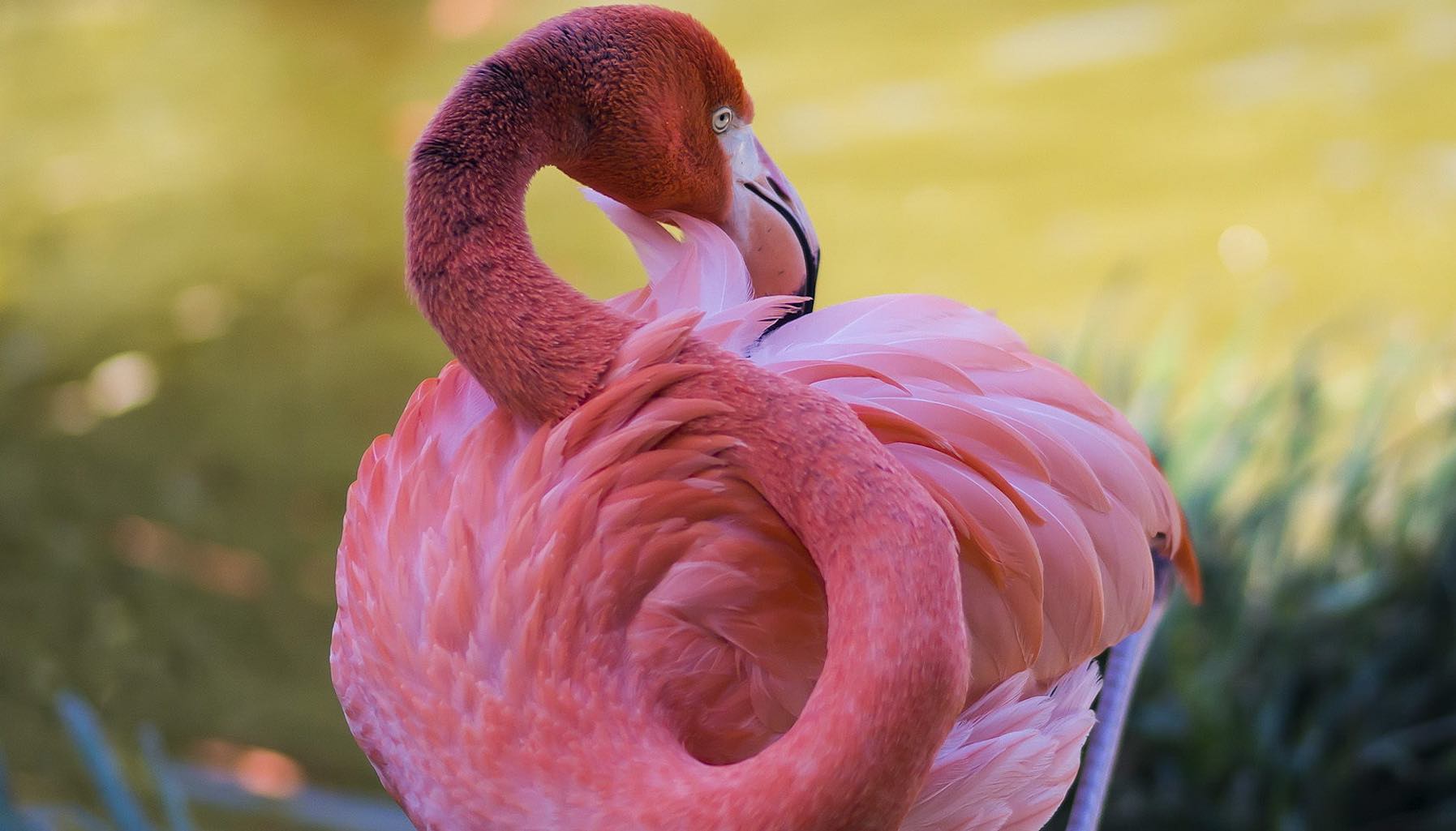
There are six species of flamingos according to the Integrated Taxonomic Information System (ITIS):
- Greater Flamingo
- Lesser Flamingo
- Chilean Flamingo
- Andean Flamingo
- James’s Flamingo
- American Flamingo
The Greater Flamingo is the tallest species, reaching heights of 1.2 to 1.45 meters and weighing up to 3.5 kg. The smallest species is the Lesser Flamingo, standing at 80 cm and weighing 2.5 kg. The wingspan of flamingos ranges from 95 cm to 150 cm.
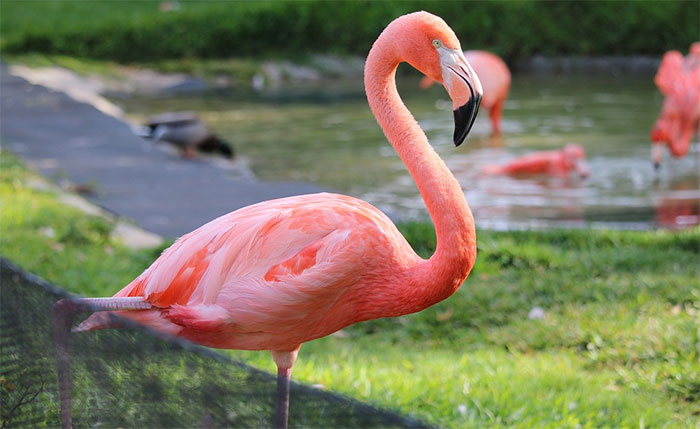
Flamingos can be found in various regions around the world. American Flamingos inhabit the West Indies, Yucatán, northern South America, and the Galapagos Islands. Chilean, Andean, and James’s Flamingos reside in South America. Greater and Lesser Flamingos live in Africa. Greater Flamingos can also be found in the Middle East and India. Being water birds, they primarily inhabit and around lakes and lagoons. Their bodies can tolerate brackish or alkaline water. While flamingos are mostly non-migratory, changes in climate or water levels in their breeding areas may force them to relocate.

Flamingos have a diverse diet, consuming larvae, small insects, green and red algae, mollusks, crustaceans, and small fish. Their ability to consume both plant and animal matter makes them omnivorous.

The pink coloration of flamingos comes from the ingestion of carotenoids present in their food, particularly beta-carotene, an organic compound responsible for red-orange pigmentation. Carotenoids are also found in many plant species, including tomatoes, bell peppers, pumpkins, sweet potatoes, and, of course, carrots. The crustaceans and mollusks that flamingos feed on also contain similar carotenoids.
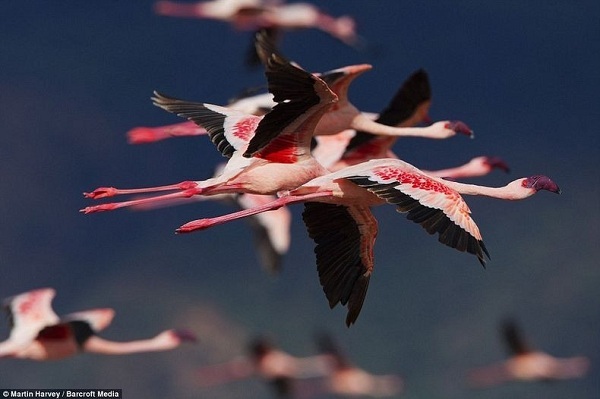
The carotenoid content in their food varies across different regions worldwide, which is why American Flamingos often exhibit vibrant red and orange colors, while the light pink flamingos of Lake Nakuru, affected by drought in central Kenya, have a paler hue.
If a flamingo ceases to consume carotenoid-rich food, its new feathers will gradually grow in a much paler color, and eventually, the red plumage will be shed. The molted feathers lose their pale pink coloration.
The feeding habits of flamingos depend on the shape of their bills. James’s and Andean Flamingos have a type called the short bill, which primarily allows them to feed on algae. Greater, Chilean, and American Flamingos have slightly longer bills, enabling them to consume insects, invertebrates, and small fish.
To feed, flamingos stir up the bottom of the water with their legs and plunge their bills into the mud and water to find food.
Flamingos gather in groups called flocks. Flocks work together to protect each other from predators and care for their young.
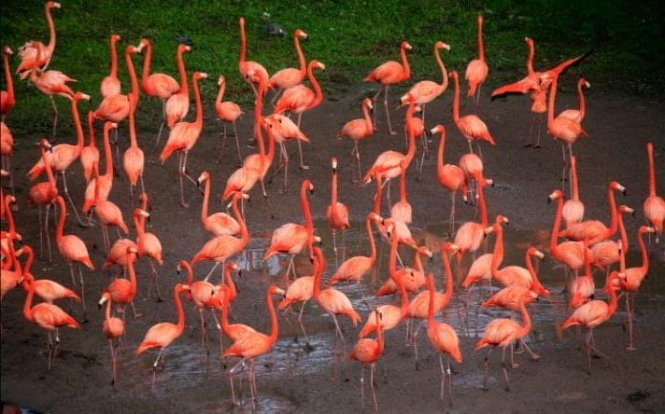
Flamingos are believed to be monogamous, forming lifelong pair bonds. Once paired, they remain with their chosen mate. A flock of flamingos will mate simultaneously to ensure all chicks hatch at the same time. The pairs build nests made of mud, and the females lay a single egg each.
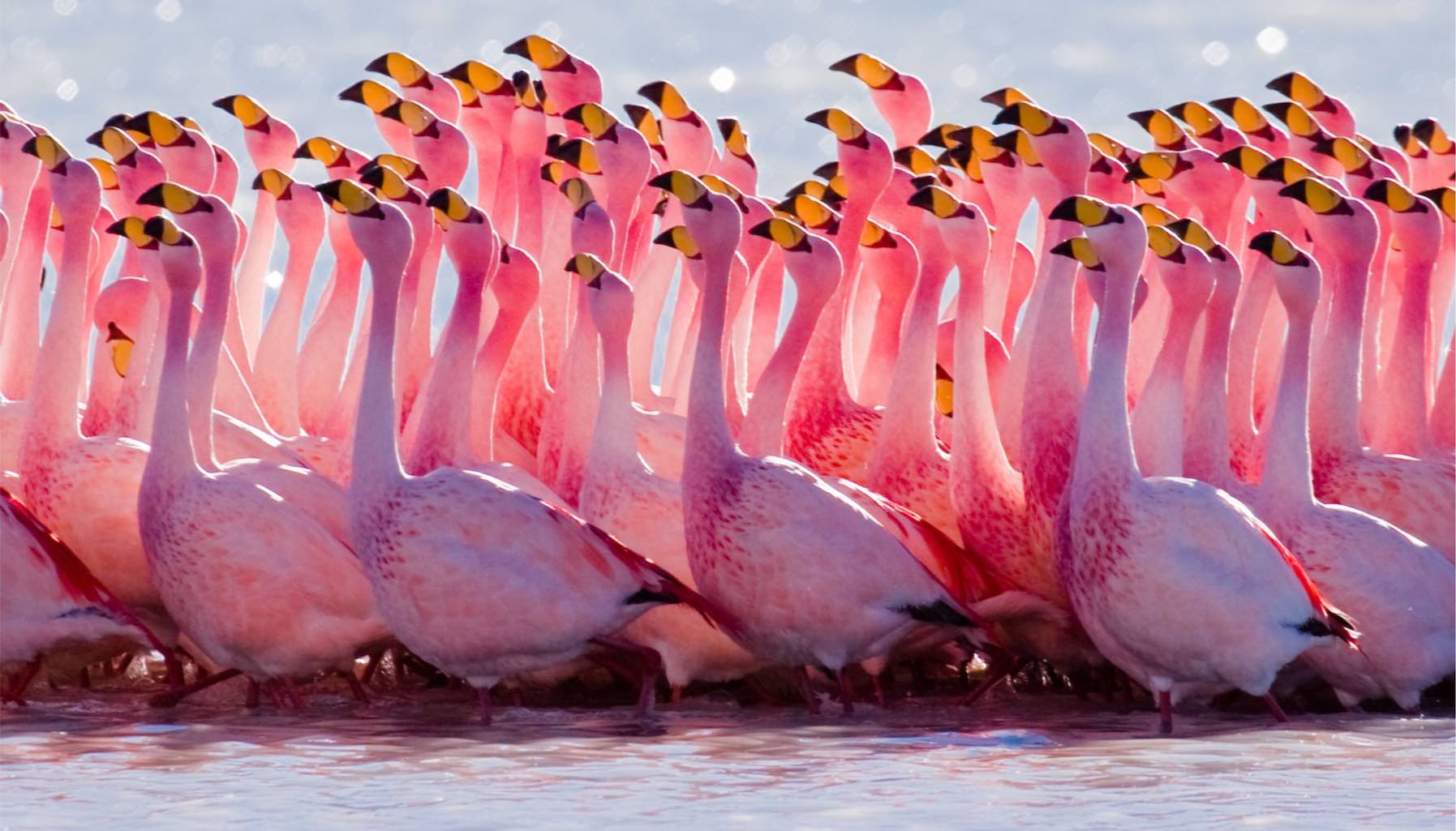
Each egg is slightly larger than a large chicken egg, measuring between 78 and 90 mm and weighing between 115 and 140 grams. The eggs take around 27 to 31 days to hatch, and the newly hatched chicks weigh only 73 to 90 grams.
Flamingo chicks are initially gray or white in color and transition to pink within a few years. Flamingos have a natural lifespan of 20 to 30 years, or up to 50 years in captivity.
Conservation Status: According to the International Union for Conservation of Nature (IUCN) Red List of Threatened Species, no flamingo species are considered at risk of extinction. However, the Chilean and James’s Flamingos are classified as near threatened due to their small or declining populations, as reported by the IUCN.
Interesting Facts about Flamingos:
- Fossil evidence indicates that the flamingo group has a long evolutionary history, dating back approximately 30 million years.
- The reason why flamingos often stand on one leg is still unknown. However, a hypothesis suggests that keeping one leg out of cold water helps them regulate body temperature. It also appears to be a comfortable resting position for them.
- Although considered tropical birds, flamingos can adapt to and thrive in colder environments as long as they have access to ample water and food.
- In East Africa, over 1 million flamingos are known to gather, forming the largest flock recorded.
- Flamingos in Africa rely on the bustling life of freshwater lakes. However, many of the lakes they depend on are ephemeral and almost completely dry up.
- On the arid coastline of Namibia, large flamingos appear to predict rainfall when the Etosha Pan region, located 500 km away, typically dries up. It is possible that these birds are exceptionally sensitive to minute drops in atmospheric pressure that signal an upcoming rainstorm.
- The intriguing behavior of flamingos bullying each other has been observed in all six flamingo species. In some instances, one flamingo has been observed charging at another while it sleeps on a single leg.
Further research is necessary to understand why they engage in such behavior, as the seemingly counterproductive behavior requires more energy and carries the risk of injury.